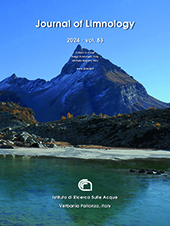Checklist and distribution of the groundwater crustacean fauna from Sicily, Italy
All claims expressed in this article are solely those of the authors and do not necessarily represent those of their affiliated organizations, or those of the publisher, the editors and the reviewers. Any product that may be evaluated in this article or claim that may be made by its manufacturer is not guaranteed or endorsed by the publisher.
Authors
Owing to the “Racovitzan impediment”, the groundwater fauna of most biogeographical regions is currently inadequately known, thus hampering our understanding of subterranean biodiversity and its protection. Based on an extensive bibliographical review accompanied by fieldwork to localize occurrence sites, a checklist of crustacean taxa reported to date from Sicilian groundwater is provided, and their distribution is described. Among the 63 taxa recorded to date, 43 belong to the class Copepoda (orders Cyclopoida and Harpacticoida), 15 to the class Malacostraca (orders Amphipoda, Bathynellacea, Isopoda, and Thermosbaenacea), and 5 to the class Ostracoda (order Podocopida). Conversely, to date, no representatives of the copepod order Calanoida nor species of the class Branchiopoda have been recorded from groundwater habitats on the island. Several taxa require accurate taxonomic revision or are yet to be formally described and are thus at present left in open nomenclature. Finally, the date of publication of several copepod and amphipod taxa is amended. A high incidence of stygobites (i.e., obligate groundwater dwellers) has been observed in malacostracans, whereas nearly half of the recorded copepods were non-stygobites. This pattern is mirrored by the incidence of endemic species, which is higher in malacostracans than in copepods. The only non-stygobitic crustacean species endemic to Sicily observed in the frame of present review is the asellid isopod Proasellus montalentii. The paucity of information currently available on the Sicilian groundwater ostracods prevents us from drawing conclusions regarding this crustacean group. The origin and composition of Sicilian groundwater crustacean fauna can be explained by considering three major faunal assemblages: the presence of ancient paleoendemic taxa, likely of Miocene origin, the colonization of the groundwater of the island during late Pliocene and Pleistocene land connections with peninsular Italy, and the direct colonization of these environments from the sea; no species of African origin have been discovered to date. Based on currently available data, the groundwater of southeastern Sicily hosts the highest species richness and some of the most biogeographically interesting taxa. Unfortunately, a progressive lowering and salinization of the local aquifers possibly due to climate change and its overexploitation threats this fauna, and several taxa are disappearing even before their discovery and description.
Edited by
Diego Fontaneto, National Research Council, Water Research Institute (CNR-IRSA), Verbania Pallanza, ItalySupporting Agencies
European UnionHow to Cite

This work is licensed under a Creative Commons Attribution-NonCommercial 4.0 International License.






